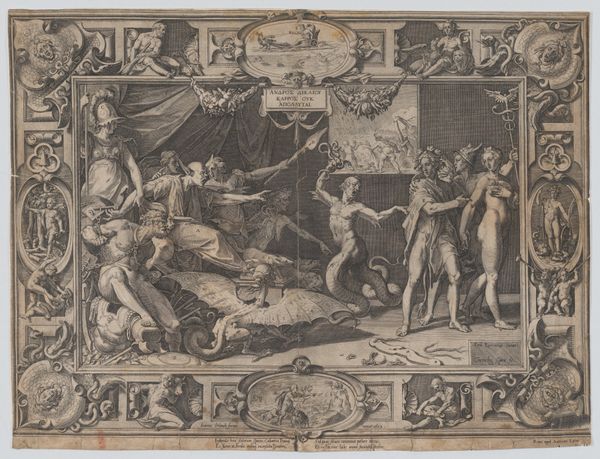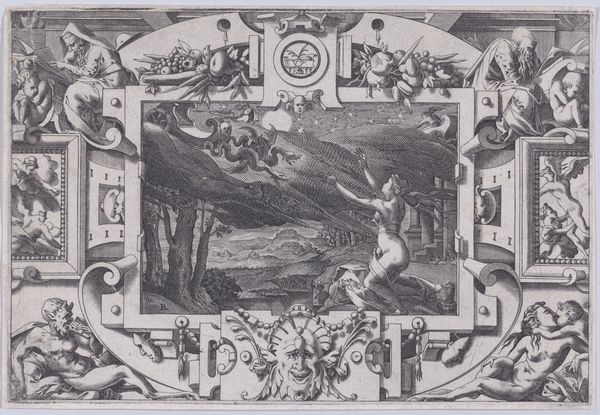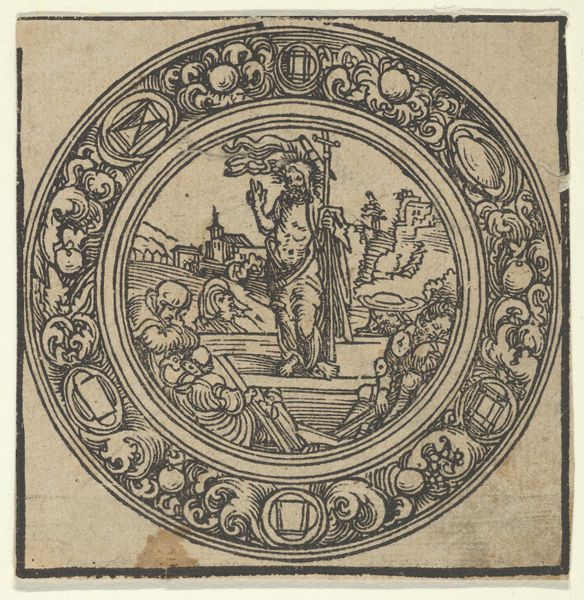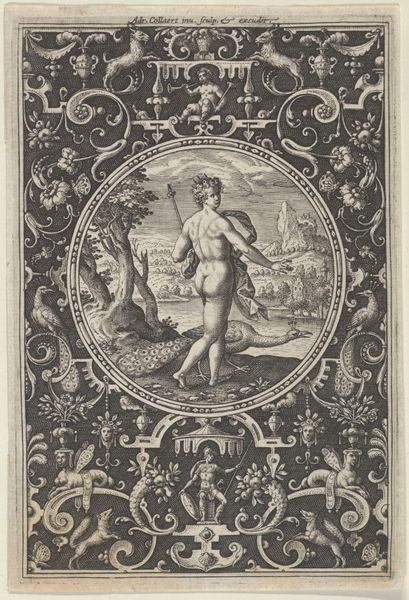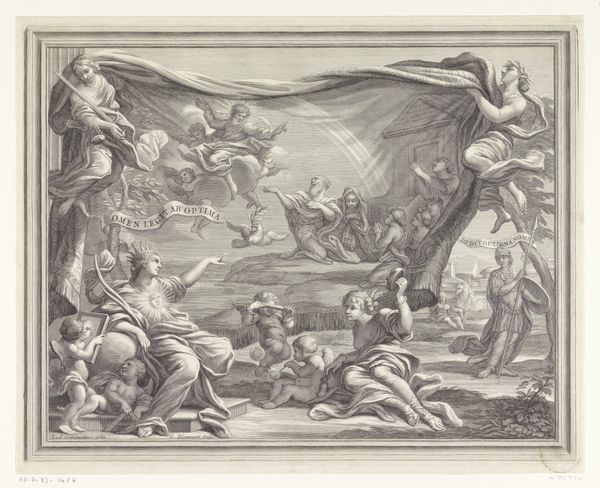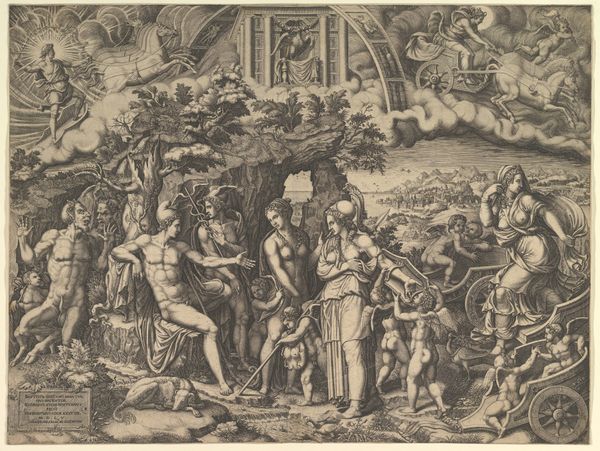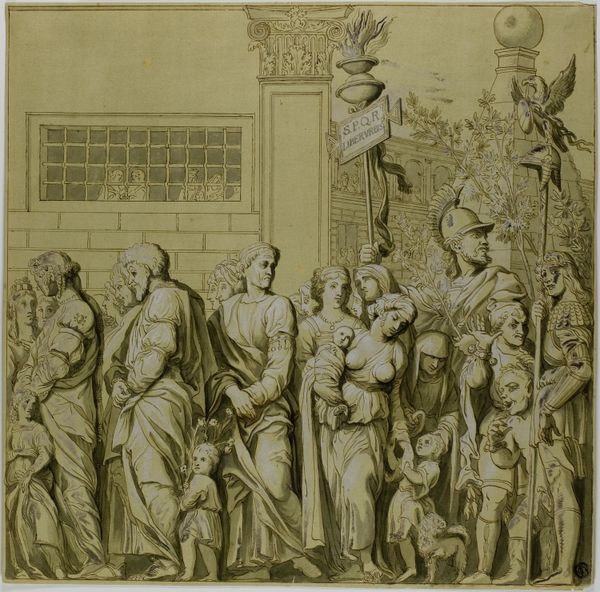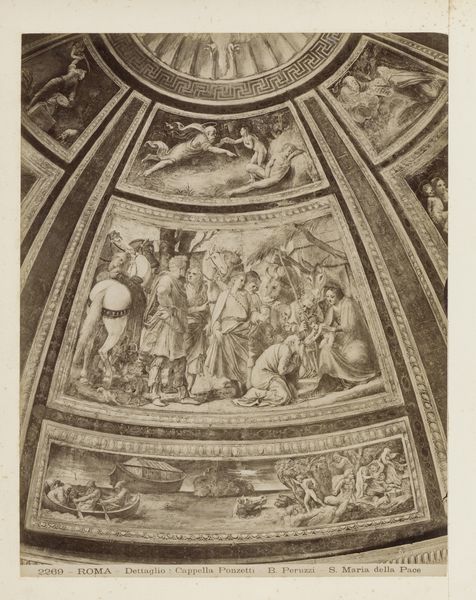
weaving, textile
#
baroque
#
weaving
#
textile
#
figuration
#
oil painting
#
history-painting
Dimensions: height 368 cm, width 384 cm
Copyright: Rijks Museum: Open Domain
Editor: Here we have "King Thaos and the Goddess Athena," a tapestry from the mid-17th century by Pieter de Cracht. It's incredibly detailed. The figures are framed by these grand, almost theatrical columns. How do you interpret the relationship between the form and the content here? Curator: The interplay of structure and imagery is crucial. Note the tapestry's woven threads—they articulate figures, landscapes, and architectural elements with equal emphasis. The implied depth, created through linear perspective, is intentionally flattened by the two-dimensionality of the weaving itself. Editor: So, it's like a visual push and pull between the subject matter and the medium? Curator: Precisely. The rigid, vertical lines of the columns provide a structural framework, almost like a proscenium arch, for the dramatic scene. Ask yourself, how does this affect the narrative's accessibility? Does it invite us into the scene or hold us at a distance? Editor: I see what you mean. It’s both immersive because of the scene, yet formal with the almost mathematical construction. Curator: Notice too the tapestry's surface texture; its coarseness contrasts starkly with the idealized figures of Athena and Thaos. Is this intentional? A formalist would argue the materiality highlights the artificiality inherent in representing historical narratives. Editor: That tension really adds another layer of complexity. I hadn’t considered that. The form impacts the perceived narrative in interesting ways. Curator: Absolutely. Understanding those relationships between form, structure, and subject, enhances the experience.
Comments
No comments
Be the first to comment and join the conversation on the ultimate creative platform.
